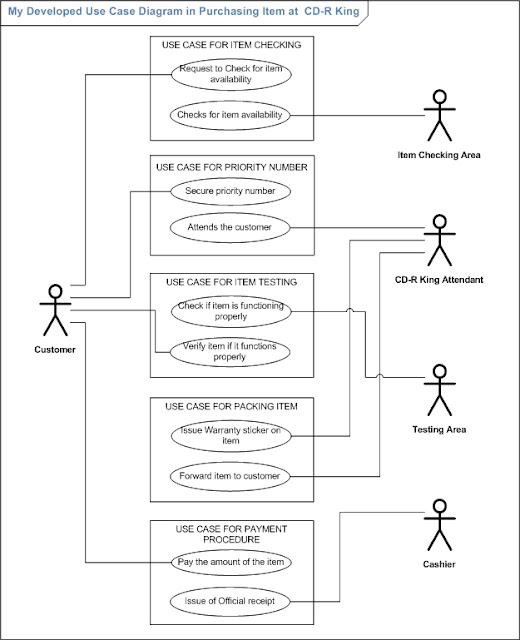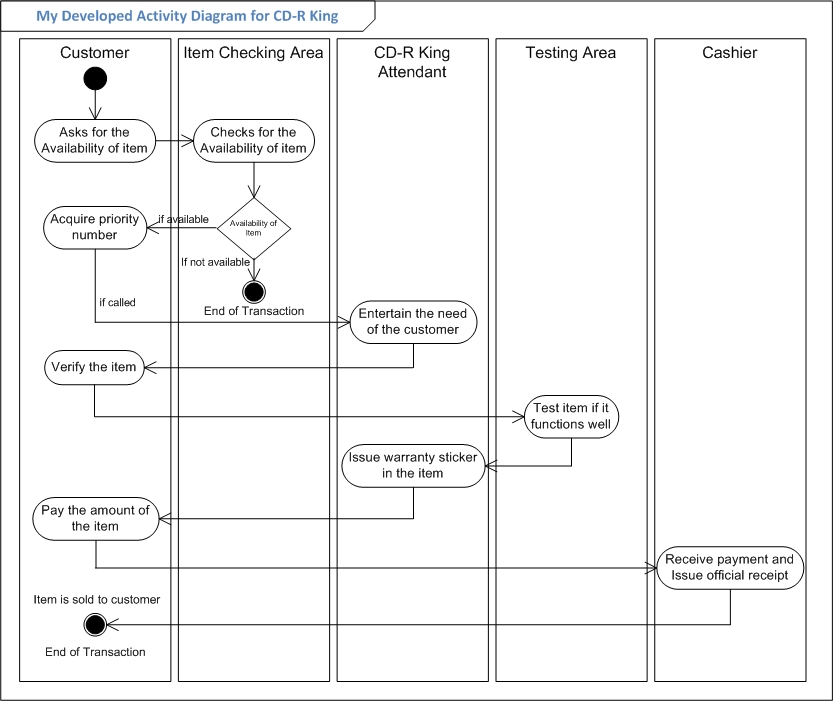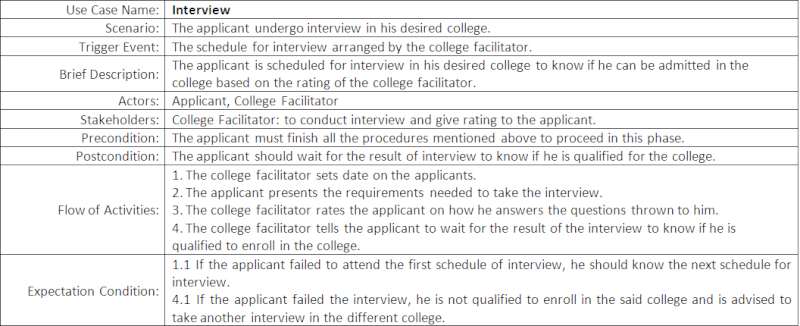CD-R King, Victoria Plaza Mall
For years now, CD-R King has been serving people in bringing gadgets, accessories, and PC stuffs in affordable amounts. CD-R King is considered one of the most success and busiest stores inside and out of the malls. Based on the last year’s available products served by CD-R King are some PC parts (e.g. mouse, keyboards, fans, HDDs), flash disks, memory cards, CDs, speakers, etc. But now, CD-R King has expanded its products and based on the observations inside the store, CD-R King is selling cellular phones, flash storage, networking devices, memory modules, electrical accessories, digital cameras, TVs, tablets, laptops and even school supplies like pens, scrap book materials, pentel pens, crayons, and other art materials.
Despite the expansion of inventory to many other products, CD-R King did not engage on any automated process in their system. CD-R king gives manual service to the customers which I find very sluggish from giving warranty stickers to issuing receipts. Here are some observable steps or process inside CD-R King.
First thing a customer needs to do is to get priority number in order to be attended. Even if the customer just asks for the availability of a certain product, the attendant would just say, “kuha lang ug priority number para matawag ka,” which I find very aloof to the customers since not all can be available in the store. What if the product he’s looking for is out of stock, he would just waste his time waiting for his number to be called and then the attendant would just say, “Sir, out of stock baya inyong ginapangita na product.” Anyone could be pissed off with that answer.
After getting a priority number, the customers will just wait for their numbers to be called. Some of the customers have short patience of waiting that result to abandoning their priority number. Some customers would just place the number back in the rack, making it available to the next customer. In this case, the customer who got the priority number will be attended first than those customers who arrived earlier than the latter customer. This would lead to customer rivalry. I say customer rivalry because it happened to me a lot of times and all I did was to mumble silently towards other customers.
After the number has been called, the attendant will serve the customer. Most of the products are needed to test to determine if it works well before handing over to the customers. CD-R King has its Testing area for some accessories and PC stuffs that are subject for testing. Headsets, PC mouse, keyboards, flash disks, cooling fans, and other stuffs are some of the products that need to undergo testing. Some of the customers bring their purchased products to complain on the deficiency of the item. The testing of the item will be done in the Testing area. Once the item has been proven defective and the warranty of the item has not yet expired, the item will be replaced with a new item.
Placing warranty stickers and issuing receipt is the next process after the item/s has been tested. Given the fact that CD-R King is a successful accessories store, the issuing of receipts is made manually. Written in the official receipt are the name of the customer, number of items, item codes, and the signature of the customer.
Together with the issuing of the receipt is the listing of items being sold to the customers. It serves as their hard copy of the lists of items that has been sold and pulled out in their store. The listing of items is also done manually. The attendant writes the item code, the item description and the amount of the items individually. After issuing of the receipts, receiving payments, and issuing warranty stickers, the item is now sold to the customer.
So that is the typical process of transactions in CD-R King. Based on the previous experience and observations that we have done the past days in CD-R King, I can say that manual issuing of receipts and listing of stocks takes time in entertaining one customer considering that the items in CD-R King are in demand because of its affordable prices. Most of the complaint of the customers is the sluggish transaction process being served to the customer.
Suggestions
After presenting the process of transactions and some negative points of CD-R King, my task here is to suggest ways and means to improve the business process of CD-R King and to develop use case diagram and use case description, activity diagram, and data flow diagram.
Suggestion #1
Before the customers get their priority number, there should be a certain area that would check the availability of the item they’re looking. With this Item Checking Area, the customers can assure that the item they need is available and the priority number they have in hand is worth the wait.
Suggestion #2
The automation of issuing receipts can be a big improvement in the business process of CD-R King because it could save time in encoding the items, unlike in the manual way of issuing receipt where the attendant writes all the items being sold to the customers and manually gets the sum of the items. It could also multiply the work of the attendant since the issuing of receipt is automated, the encoded items will also be listed as sold items so that when having inventory checking, they can follow the items sold through the encoded lists.
USE CASE DIAGRAM AND DESCRIPTION, DATA FLOW DIAGRAM, AND ACTIVITY DIAGRAM

USE CASE DESCRIPTIONS























